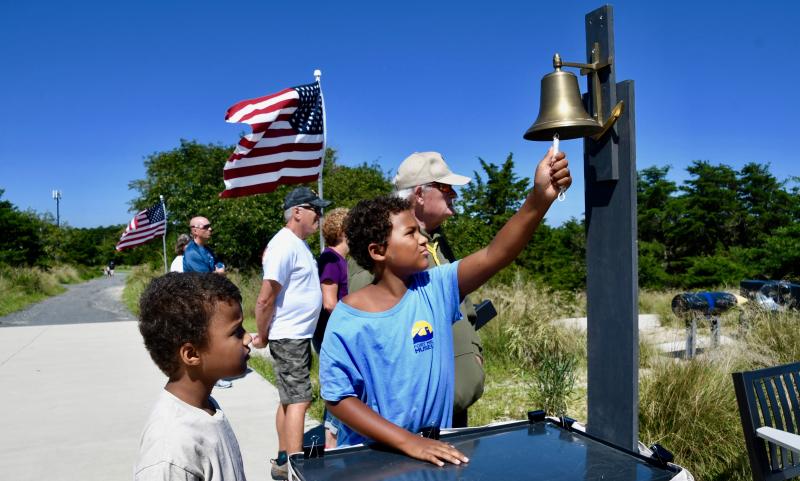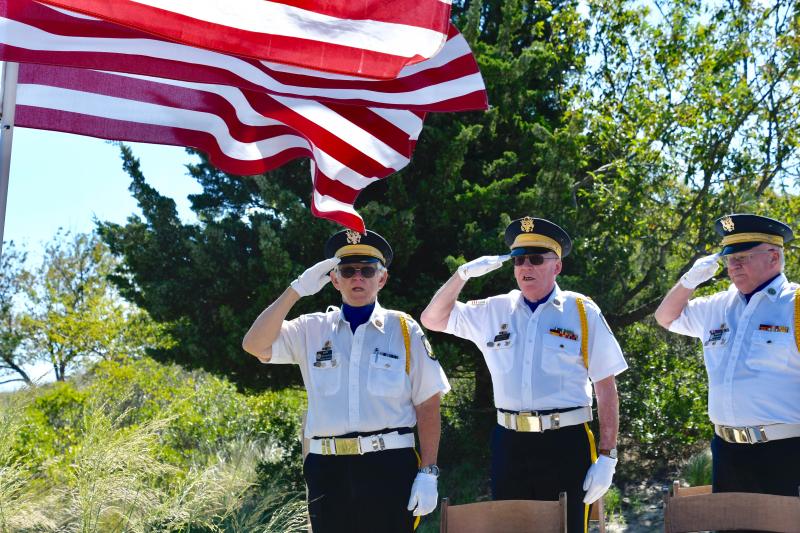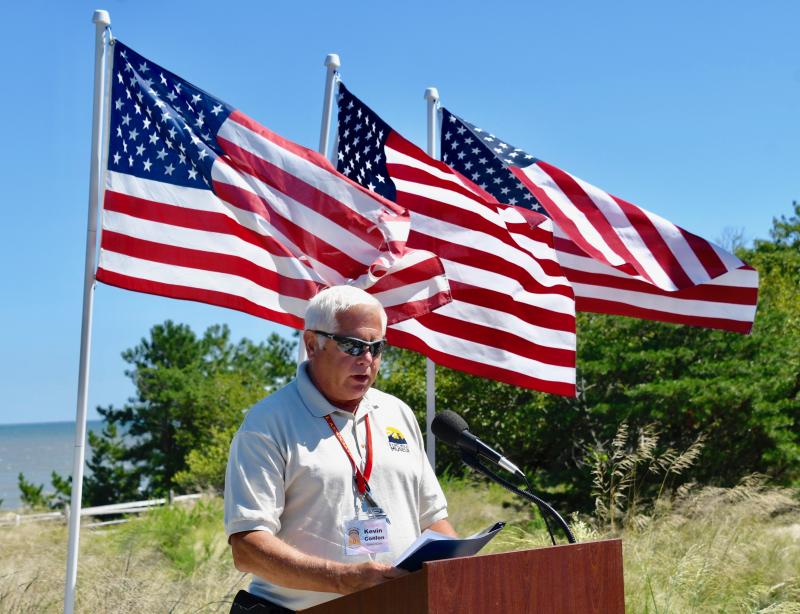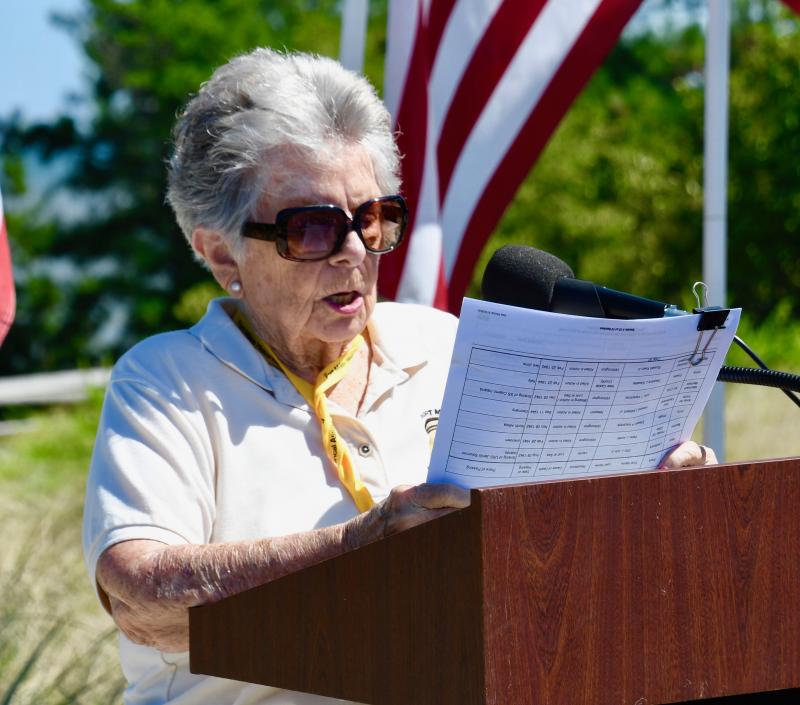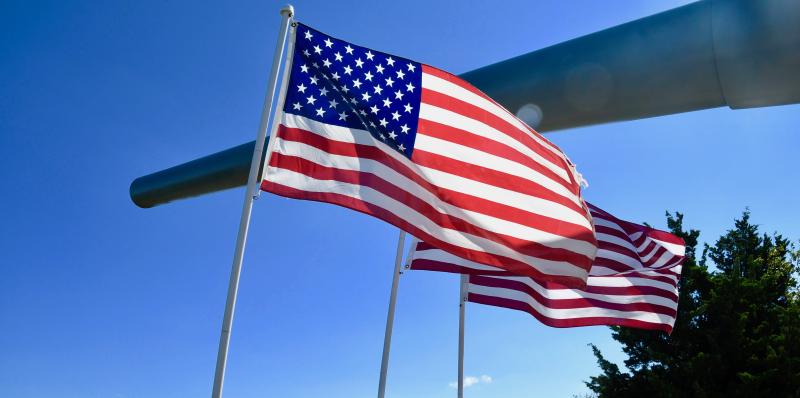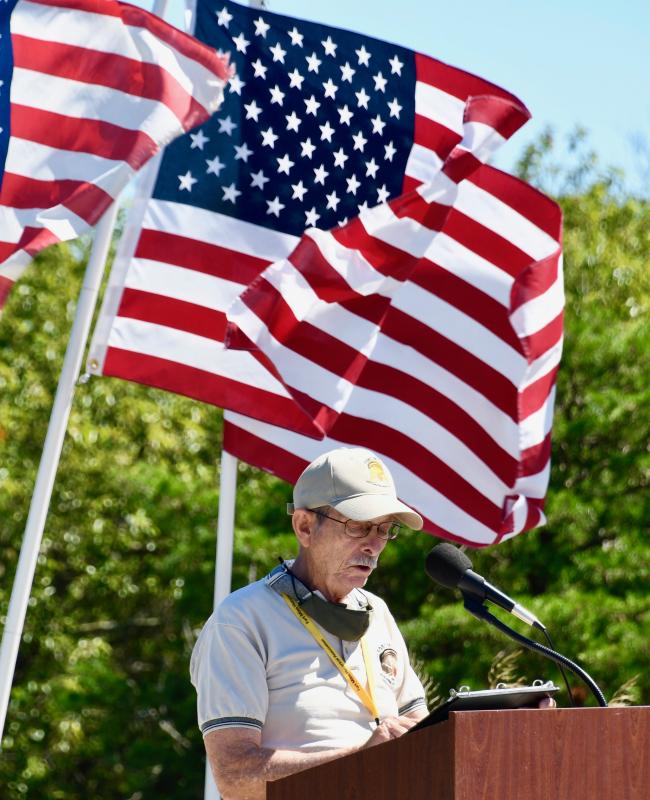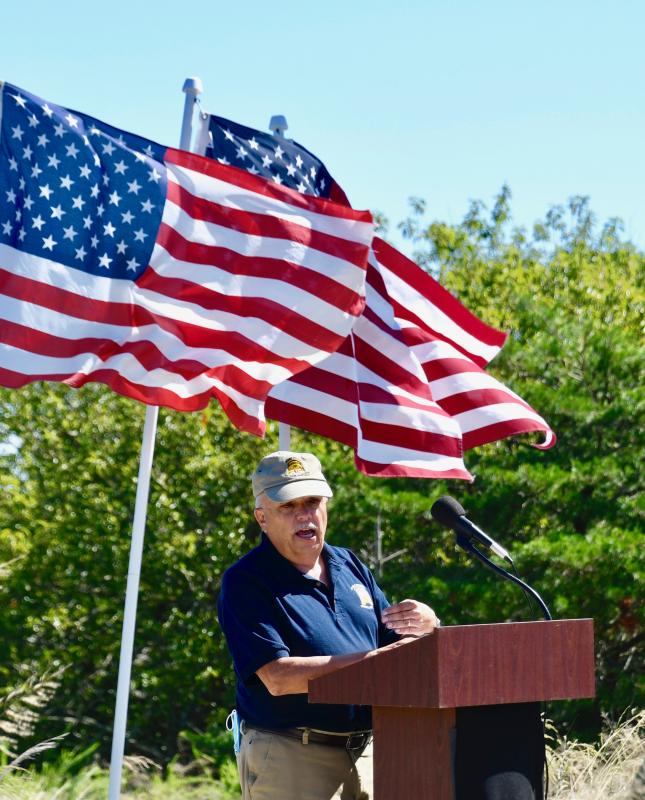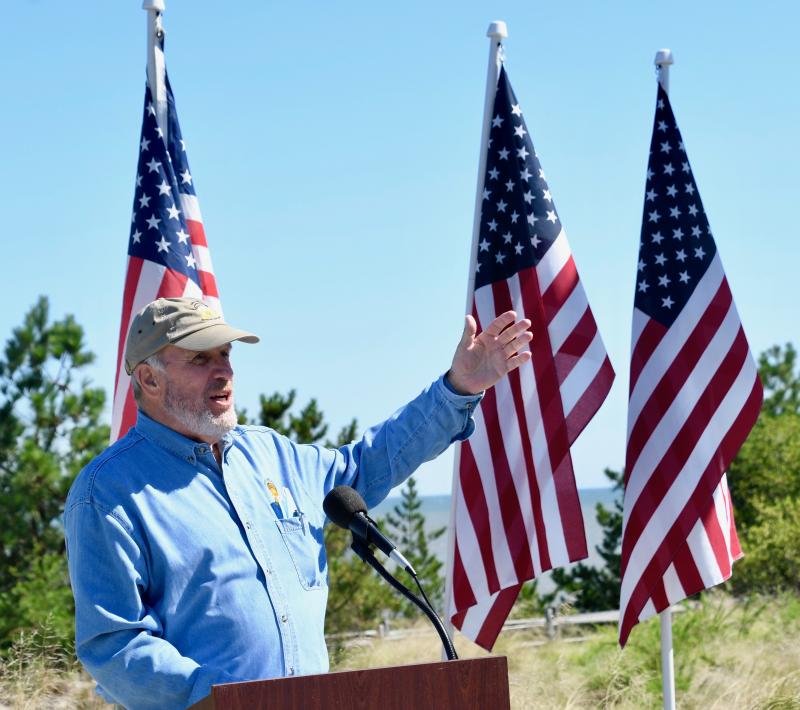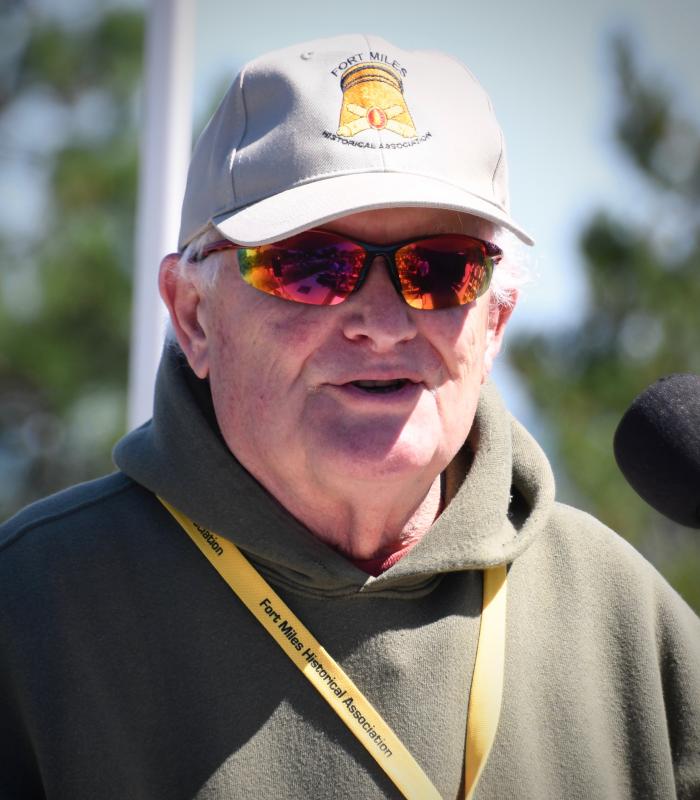Fort Miles volunteers celebrate VJ Day
There are probably not many Victory over Japan Day ceremonies across the nation, and it's doubtful that any are held under the shadow of a restored USS Missouri gun barrel. The Japanese surrender took place Sept. 2, 1945, on the USS Missouri, officially ending World War II.
The Fort Miles Historical Association commemorated the event Sept. 2 at Fort Miles in Cape Henlopen State Park, Lewes, with its sixth annual VJ Day ceremony and its fourth annual memorial service to honor fallen Delawareans from World War II.
It was FMHA volunteers who saved the gun barrel from becoming scrap, and funded and organized its transport via rail and barge to Lewes in 2012. The Missouri display has become the centerpiece for the Fort Miles Museum in Battery 519.
This month, the association will unveil its USS Arizona relic display, with a grand opening planned for April. “This will be a world-class display to honor this hallowed and sacred relic,” said Will Short, FMHA board member and museum docent and volunteer coordinator.
The Arizona was sunk during the Dec. 7, 1941 Japanese attack on Pearl Harbor that ignited America's entry into the war.
Short said Fort Miles will be one of three locations in the world with relics from both the start and end of World War II.
In Delaware, 30,000 men and women – more than 10 percent of the state's population – served during World War II, and nearly 800 died in service, including 600 serving in the Army in the European Theater.
Each year, FMHA volunteers read 100 of the names of the fallen during a solemn ceremony to honor those who made the ultimate sacrifice.
Ed Paterline, featured speaker, said war deaths in Delaware were felt more intimately because the state was so small and everybody knew everybody.
He said 50 percent of the eligible males in Delaware aged 18 to 37 were in service.
Gary Wray, founder and former association president, set the scene for the events of Sept. 2, 1945, in Tokyo Bay.
He said Gen. Douglas MacArthur, commander of the Pacific Theater, was given the task of planning the surrender ceremony. “The Allies were disappointed in the European surrender in a church, and Gen. Dwight Eisenhower was not even there. MacArthur wanted something spectacular,” he said.
The 11-member Japanese delegation was ferried out to the Missouri for the 45-minute surrender ceremony. The general had invited 225 war correspondents and 75 photographers to document the historic event.
When the official ceremony was over, a flyover of every available airplane in the Pacific Theater began, and lasted an amazing seven hours. Wray said 435 B-29 bombers were the last planes to fly over. “He wanted the Japanese people and others to see American power,” Wray said.
Wray said the ceremony took place under the Missouri gun barrel that is now on display at Fort Miles. “This barrel was there that day,” he said.
In attendance were World War II and Korean War veteran Rudy Swanson of Lewes and Ray Bivens, director of Delaware State Parks.
Max and Zak Wray, grandsons of Gary Wray, served as bell ringers during the ceremony.
